Airfix 1/72 Hurricane I "ragwing" – early and standard
The Hawker Hurricane was the first monoplane fighter adopted by the Royal Air Force since the Bristol M.1C Scout of World War I, and was also the first fighter in RAF service capable of exceeding 300 m.p.h. The airplane was evolutionary, in that all of its construction techniques were based on the traditional formula of metal airframe with fabric skinning other than the engine cowling and cockpit area.
The first flight on November 6, 1935, was so successful that the directors of Hawker Aircraft felt justified in tooling up and ordering material for 1,000 aircraft in advance of an official production order. Given the timing of the aircraft's arrival on the scene, its traditional methods of construction were useful, in that it allowed a rapid production tempo to be built up, while squadrons making the leap from what were basically advanced World War I fighters to modern fighters were able to maintain and repair their new Hurricanes without extensive re training of ground personnel. This was unlike the Spitfire, which was completely modern in concept and construction, and presented problems in building up production and in operational maintenance. Had the Hurricane not existed, and in such numbers, the Battle of Britain would assuredly have had a far different outcome.
Moving up from the Gloster Gauntlet and Gladiator or the Hawker Fury, airplanes thoroughly derivative of the technology of the First World War, pilots were impressed by the size of the Hurricane, the noise associated with its engine, and the marked feeling of speed when airborne in comparison with their previous mount. One thing was discovered fairly quickly: the fabric covered wing was not up to the performance requirements of high speed flight. Pilots reported seeing the fabric "ballooning" at maximum speed; fortunately there were no reported fabric failures, which would have led to a catastrophic wing failure. However, Hawkers undertook the design of a metal covered wing, and many if not most of the early production Hurricanes eventually had their fabric wings replaced during the course of 1940. Archaic as its construction might have been, the very primitiveness of the early Hurricane became Britain's salvation in the Battle of Britain, due to the fact the fabric wings and fuselage were easily patched up when aircraft were recovered from crashes and thus returned to service more quickly than did the more modern Spitfire.
While there have been many kits of the Hurricane in its various versions released over the years in 1/72 scale, Airfix is the first to release the very early “ragwing” version as a mainstream injection-molded kit. The first kit (A01010) released in 2014, makes up as the “standard” Hurricane I, with the ventral fin and non-retractable tailwheel, and the 3-blade deHavilland 2-position propeller. The second kit (A02067) was released this past spring, and allows a modeler to make either the “standard” Hurricane or the “early” Hurricane which lacks the ventral fin, has a retractable tail wheel, a 2-blade Watts propeller and the early “kidney” exhausts. Both kits have excellent decals providing markings for two different aircraft.
What is most impressive about these kits is that the surface detail is competitive with that found on the 1/48 kit. The fabric surface of the fuselage does not have “hills and valleys,” while the wing does show the ribs with slight “hills and valleys” that conform with photos of the real thing. The cockpits are very detailed for 1/72 scale, while the 2-part canopies are thin enough to be posed in the open position. The gear wells are nicely-detailed. Overall, these are among the nicest 1/72 kits I have seen for overall detail and production quality.
I decided to build both kits simultaneously. The major difference between the two is the parts used in the cockpit for the early version, which does not have rear armor, and the different lower rear fuselage parts. Kit A02067 has the sprues for both cockpit parts, the different propellers, different exhausts, and different lower rear fuselages, while A01010 has only the parts for the “standard” version.
I began by painting the cockpits silver, with British Cockpit Green for the rear cockpit bulkheads and other small details. I used cut down Band Air strips for the seat belts, with detail applied with a pen. The kits provide decals for the instrument panels.
Assembly of the fuselage and wing sub-assemblies was easy and required no filler. Fit of the wing to the fuselage was also easy, as was the separate lower rear fuselage sections. Overall, these kits have some of the best fit I have found in any new kits.
Since I had the new Xtradecal sheet of Hurricane I's, I decided to use this rather than the kit decals. There is nothing wrong with the kit decals, they're excellent; I just wanted different markings. I did the early Hurricane as L1599 of 56 Squadron B Flight, as seen at North Weald in the summer of 1938, and the later Hurricane as HC-456, one of 12 Hurricane Is supplied to the Finnish Air Force just too late to participate in the Winter War, of 1/Lentolaivue 30, in June 1941, still in its original RAF camouflage, rather than the better-known later scheme.
For the Finnish Hurricane, I painted the yellow theater markings and masked them off, then the white wing, followed by the black wing, then the aluminum fuselage and lower horizontal stabilizers, masking off each in turn. The RAF Hurricane was painted with Model Master Aluminum with Model Master Sealer, which looks very much like painted Aluminum dope.
The upper camouflage was done with Xtracrylix RAF Dark Earth and RAF Dark Green. I airbrushed the Dark Earth, then hand-painted the outlines of the disruptive green pattern, and filled in those areas with the airbrush. Fortunately, Xtracrylix dries the same tones regardless of application, and brush painting results in a thin, smooth line that doesn't look bad with airbrushing. Both models were then given a coat of Xtracrylix Gloss varnish.
The Xtradecals went on without problem with an application of Micro-Sol. Both models were given a coat of Xtracrylix Flat varnish, then the landing gear, exhausts, venturis, radio masts and propellers were attached. The windscreens were attached using white glue to fill any gap, while a drop of CA glue to the lower edges of each of the canopies allowed them to be positioned open.
Overall, more excellence from Airfix, at prices one cannot say “no” to. The kits have superb detail for their scale inside and out, assemble easily and look good when finished. It would be neat if Airfix would do a release of their 1/48 Hurricane I with the fabric wing, but these kits are excellent in their own right.
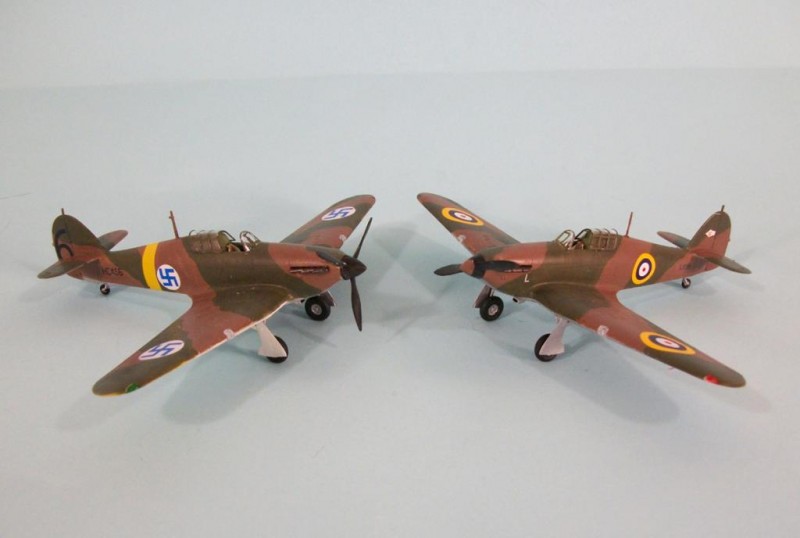
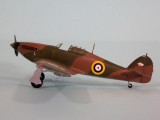
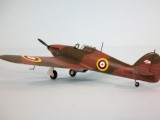
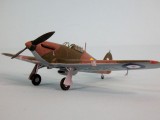
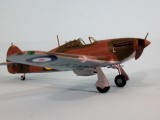


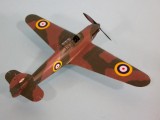
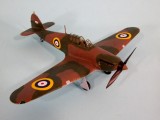
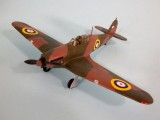
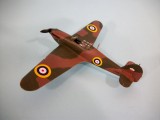
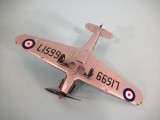
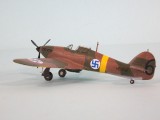
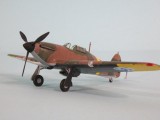
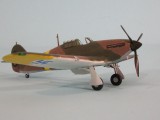
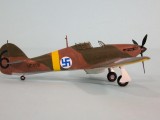
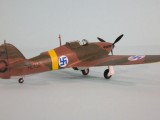
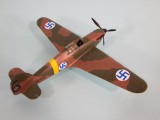
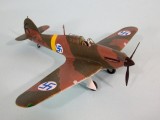
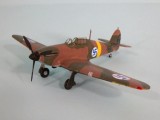

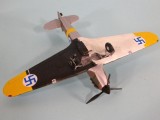
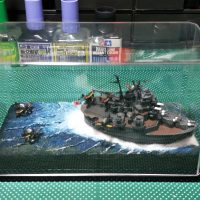
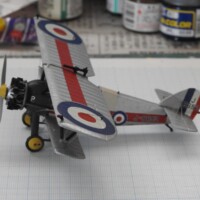

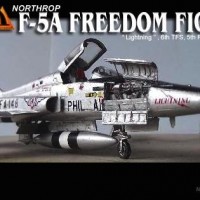
🙂 ... Greetings ... 🙂 :
Very nice pair of Hurricanes.
A very good way to spot the difference's between the two. Nice job.
Im very like this you build this new AIRFIX Hurrican is
the best in 1/72 scale kit on the market.
Duble build LIKE so much an FINNLAND is great in RAF in 5
color sheme.
Nice Hurri's Tom!
With all the building you do, how do you have time to write? Or should it be the other way around?
Actually, much of the "modeling" is actually "writing." One gets stuck/hung up on something, one goes and works on a model for an hour while the brain engages in what I call "sidereal thinking", and then the problem is solved and the tappety-tap-tap writing resumes. faster.
2 very fine 'Canes there. Two of my favorite color schemes for them also. Airfix is really becoming the Cat's A-- isn't they? I saw the box art for the He111, being chased by Skuas-outstanding, old fashioned artistry. The "Kate" was cool too. Hope they hurry up the 1/48 P-40B.
I never met a Hurricane I didn't like. Or Hurricanes. The 1/72nd scale Airfix kits are as good if not better than some of the 1/48th scale stuff that is out there.
Two thumbs up on these two.
Lovely! Call me a heretic, but I always thought the Hurricane better looking than the Spitfire, and these are two fine examples.